Sara and I are back to being roommates in Jerusalem because our two rooms are far apart again. We both got up at 6:30am and then met Olivia and Kate for Breakfast in the main dining room, which was pretty uninspiring…even the coffee. Thankfully the rest of the day was filled with inspiration. We boarded the bus around 8:15 and set off for the Old City of Jerusalem.

“Old City” of Jerusalem
On the way, Ami reminded us that all buildings in Jerusalem must be covered with “Jerusalem Stone, which is limestone. He talked about how Jerusalem is considered the holiest city in the world because it is important to Jews, Christians, and Muslims. On a side note, the “Old City” is largely NOT the city of Jesus’ time but is built on top of the city of Jesus’ time. The whole city is a Tel with many strata. It covers one square kilometer and has a population of 50,000 people. Greater Jerusalem is over 800,000.
The walls around the old city were built in 1536 by the Turks. The city wall has eight gates, and the Golden Gate (or Gate of Mercy), has been sealed since medieval times. Today we walked through three of the city gates including:
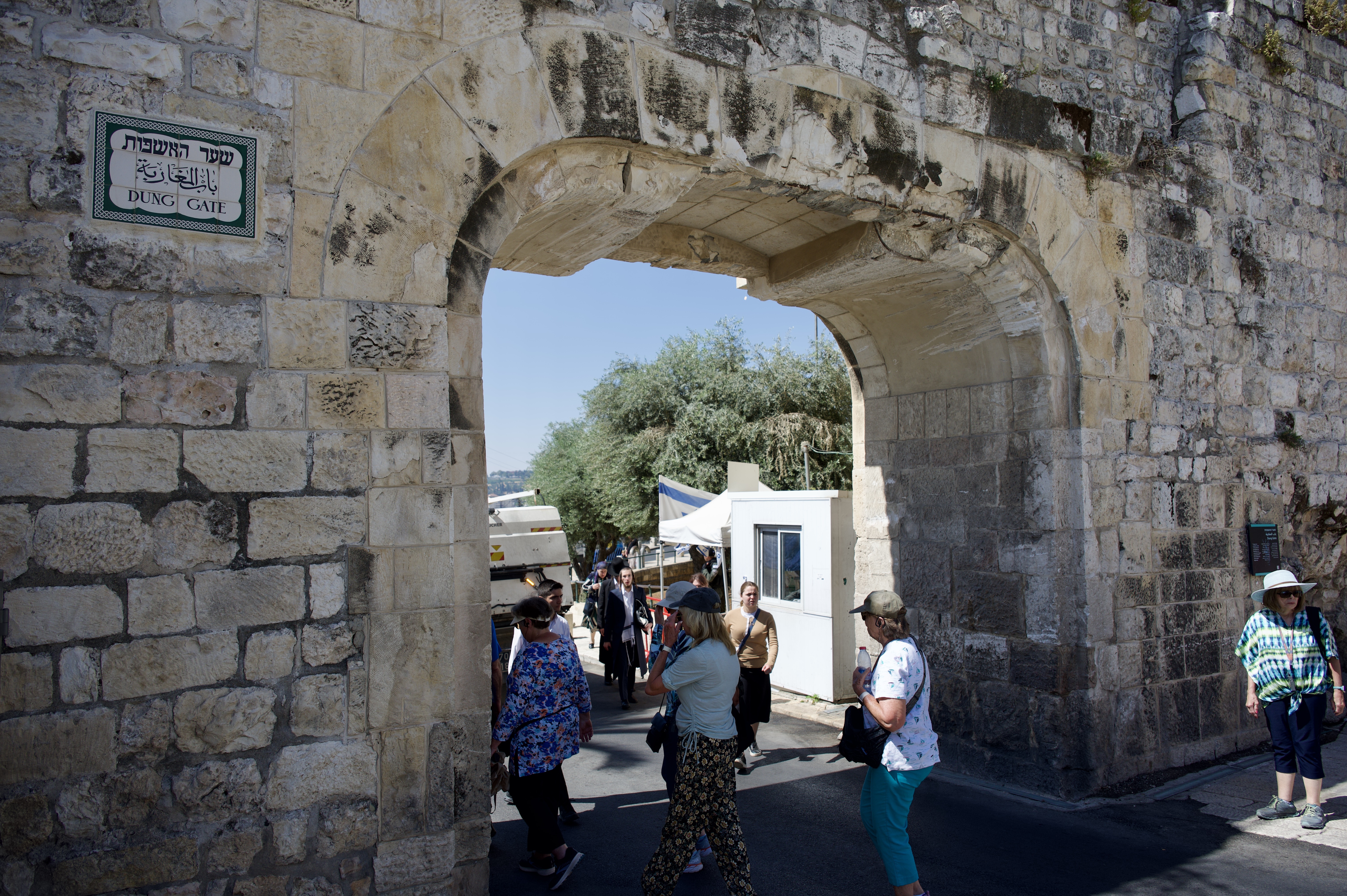
Dung Gate (Leads to the Western Wall)
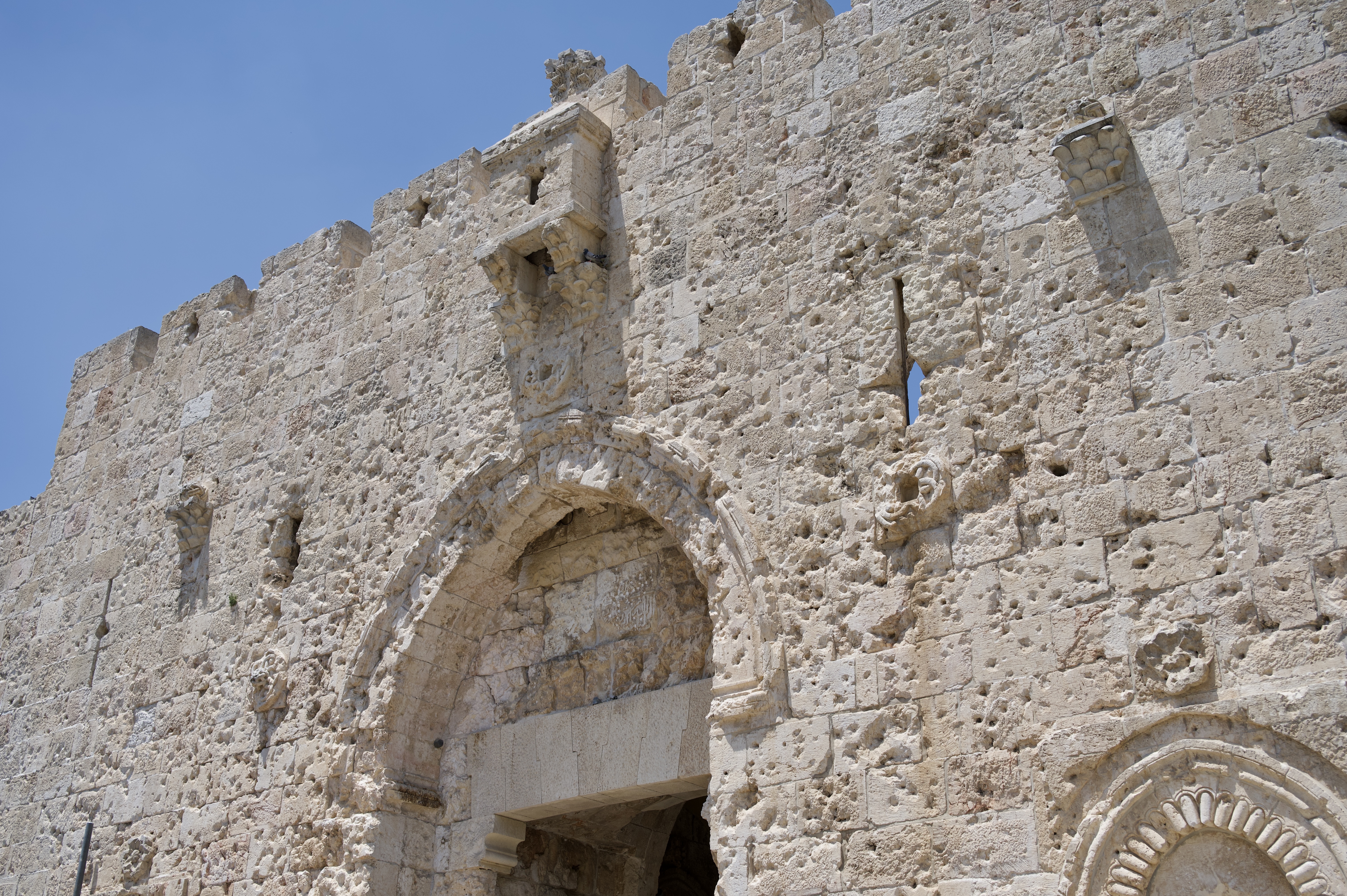
Zion Gate (Notice all the bullet holes)

Jafa Gate
The Old City is today divided into quarters: Armenian, Christian, Jewish, and Muslim. Later in the day we visited the Jewish Quarter. More on that to come.
Western Wall / Southern Steps

Our first stop in Jerusalem was the Western Wall also known as the “Wailing Wall.” On my first trip to Jerusalem, we didn’t spend much time here at all, but this was not the case today. We ended up seeing and learning a lot of things that I did not get in 2020.
So what is the Western Wall? Herod the Great created a platform with retaining walls upon which to build the temple. The Wailing Wall is a remnant of the western retaining wall as built by Herod. This wall would have been present in the time of Jesus. For the Jews, this wall, and the Temple Mount, are a reminder that they are without a temple. They believe that for the Messiah to come, the temple in Jerusalem must be rebuilt on the Temple Mount.

The obstacle is that the Dome of the Rock and the Al Aqsa Mosque (above) are some of the holiest places in Islam and are located on the Temple Mount. Jews come to this wall to pray for the rebuilding of the temple and for the Messiah to come (they also pray for other things as well – more on this below).
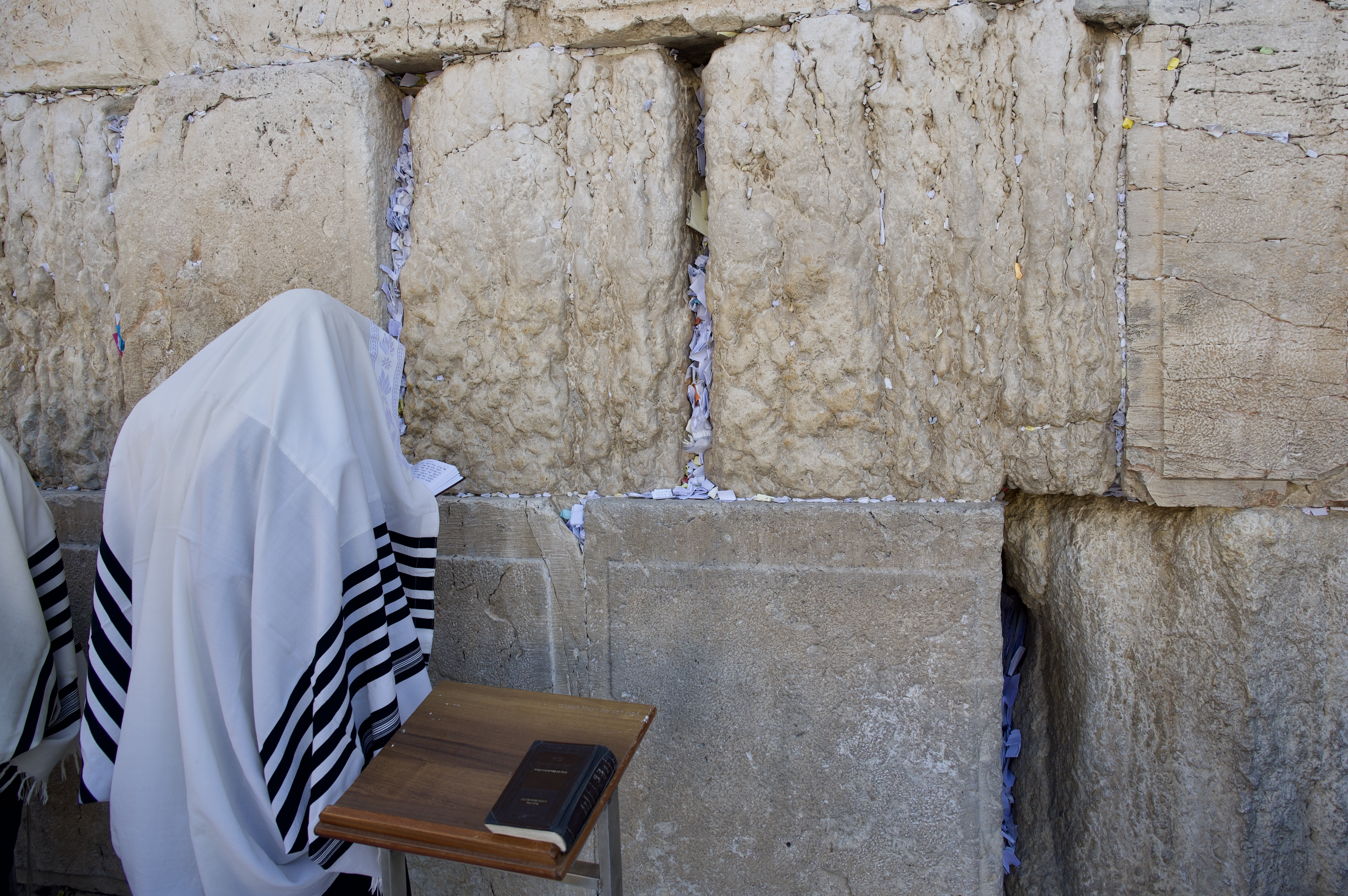
They write prayers on pieces of paper and stuff them in the cracks of the walls. The head Rabbi periodically takes all the paper and burns them.
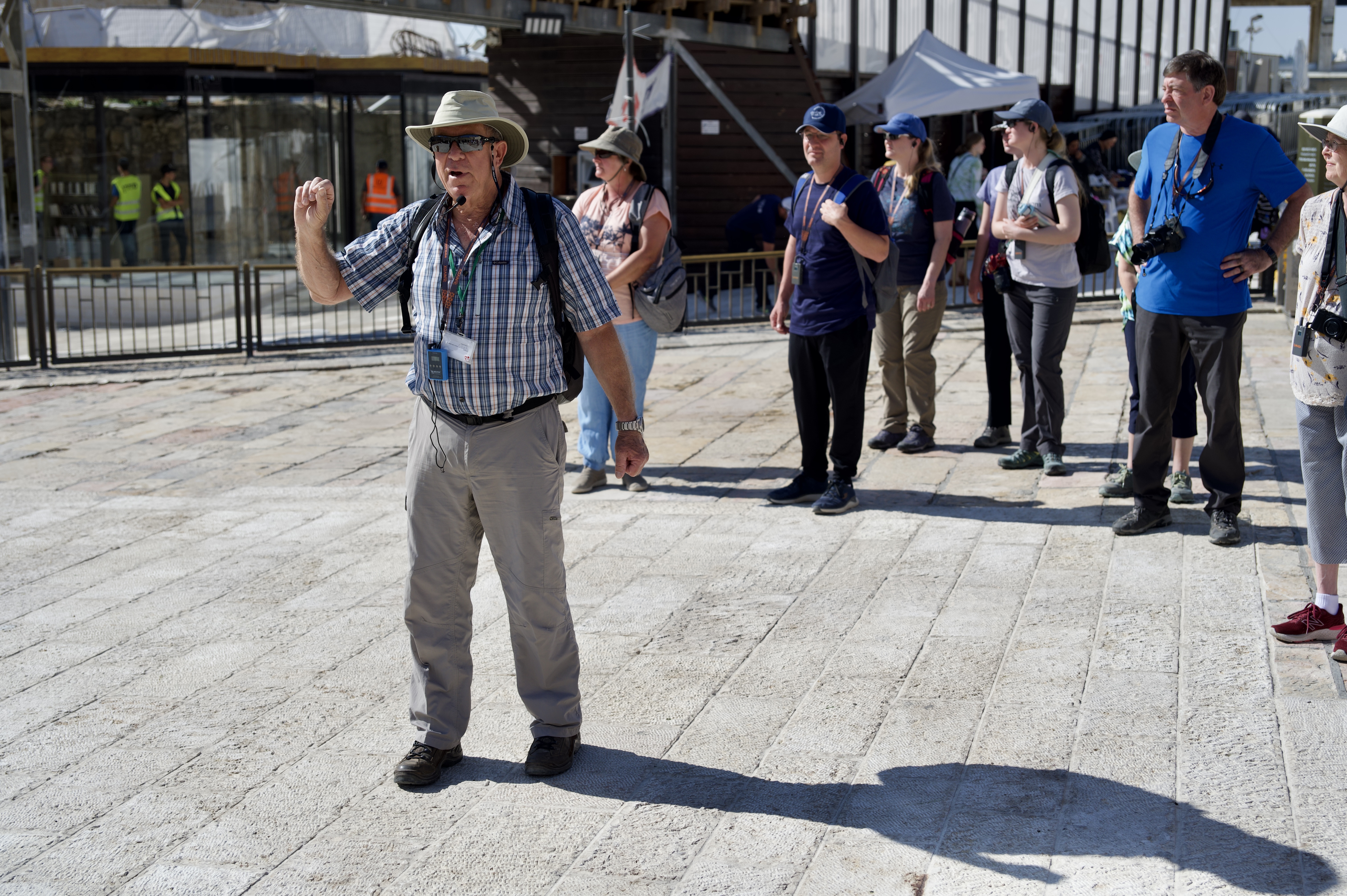
As we arrived at the wall, we first had to go through security, and then Ami explained the significance of the Western wall to the Jews.

He talked about the Orthodox Hasidic Jews wearing their phylacteries, and just as he was talking about this, I saw one young man carrying a machine gun and wearing his phylactery. He said that to him the term “Wailing” is no longer relevant that they do not wail, they simply pray. He said that wailing was previously because of Arab corruption of the site, but now that the wall is back in Israel’s control, there is no need to wail. I had not heard this explanation before.
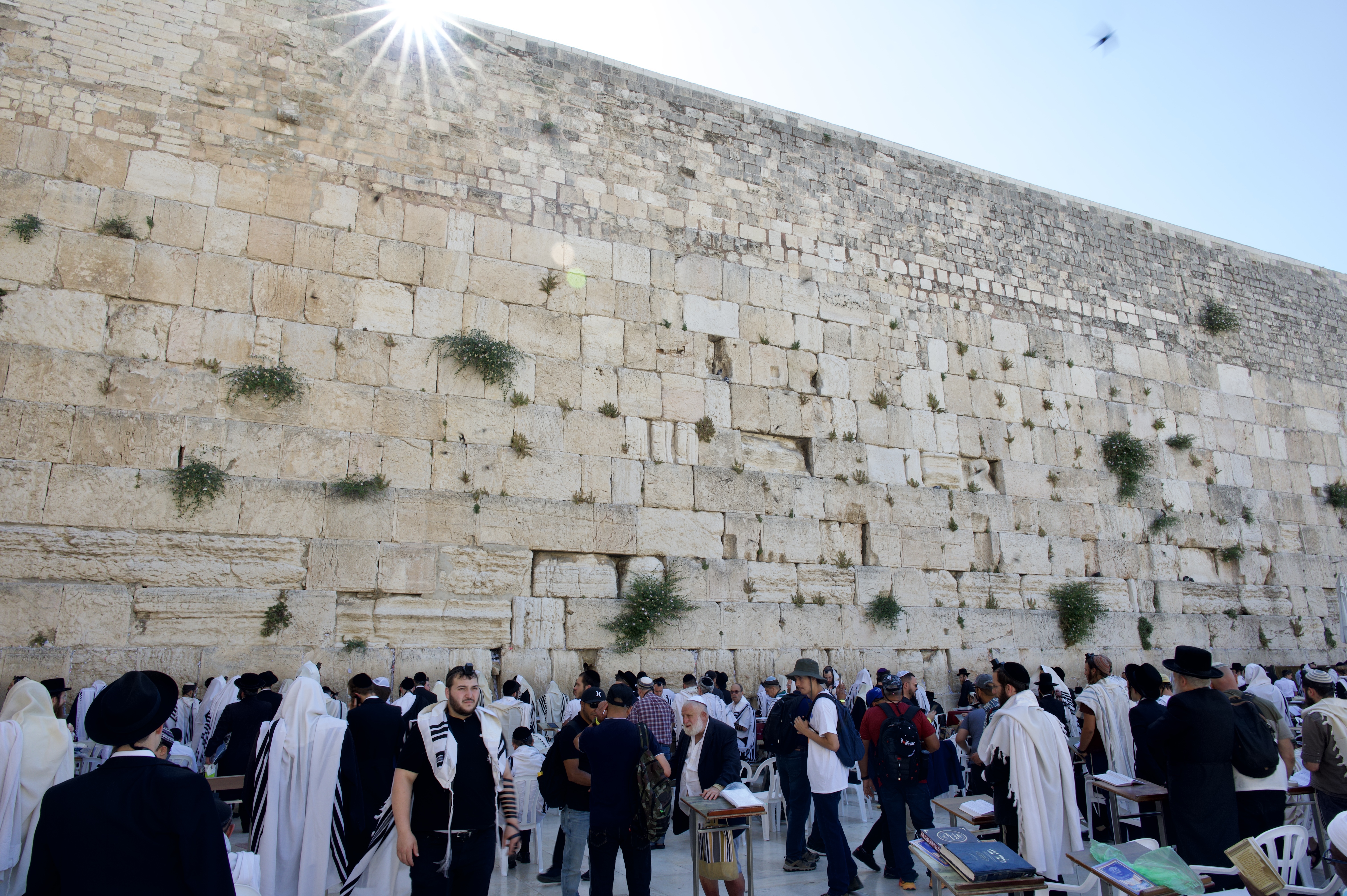
After he finished speaking, we each got a chance to walk down to the wall for a few minutes. Men must have their head covered and approach the wall on the left. Women do not have to be covered, and they go to the right.

I observed numerous individuals washing themselves for purification before going down to the wall to pray.
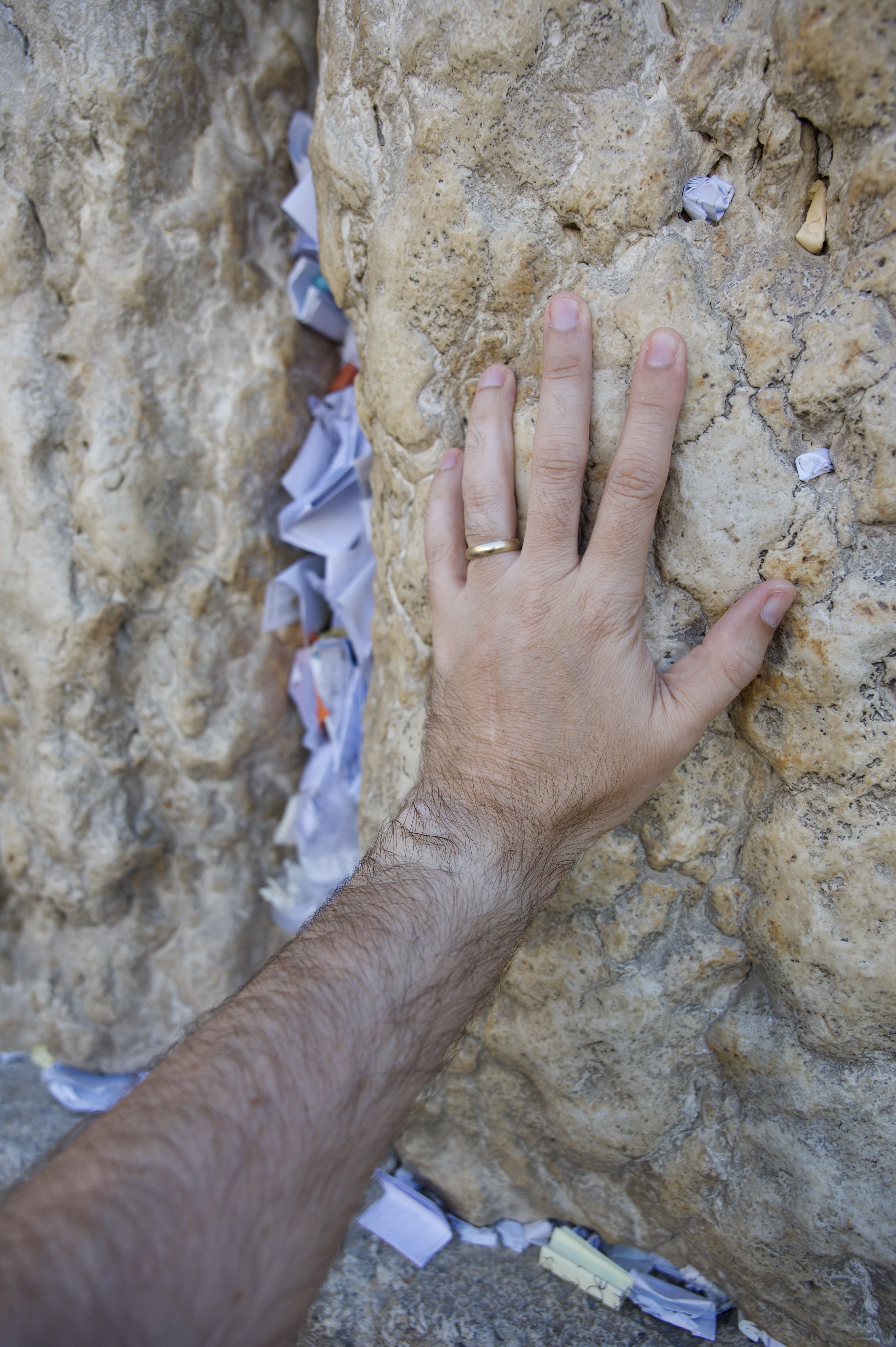
I went down to the wall placed my hand on it, though I do not believe there is any special connection to God in this place. I do however appreciate that some of these stones were present at the time of Jesus, and that is humbling to know that he was here (more on this below).
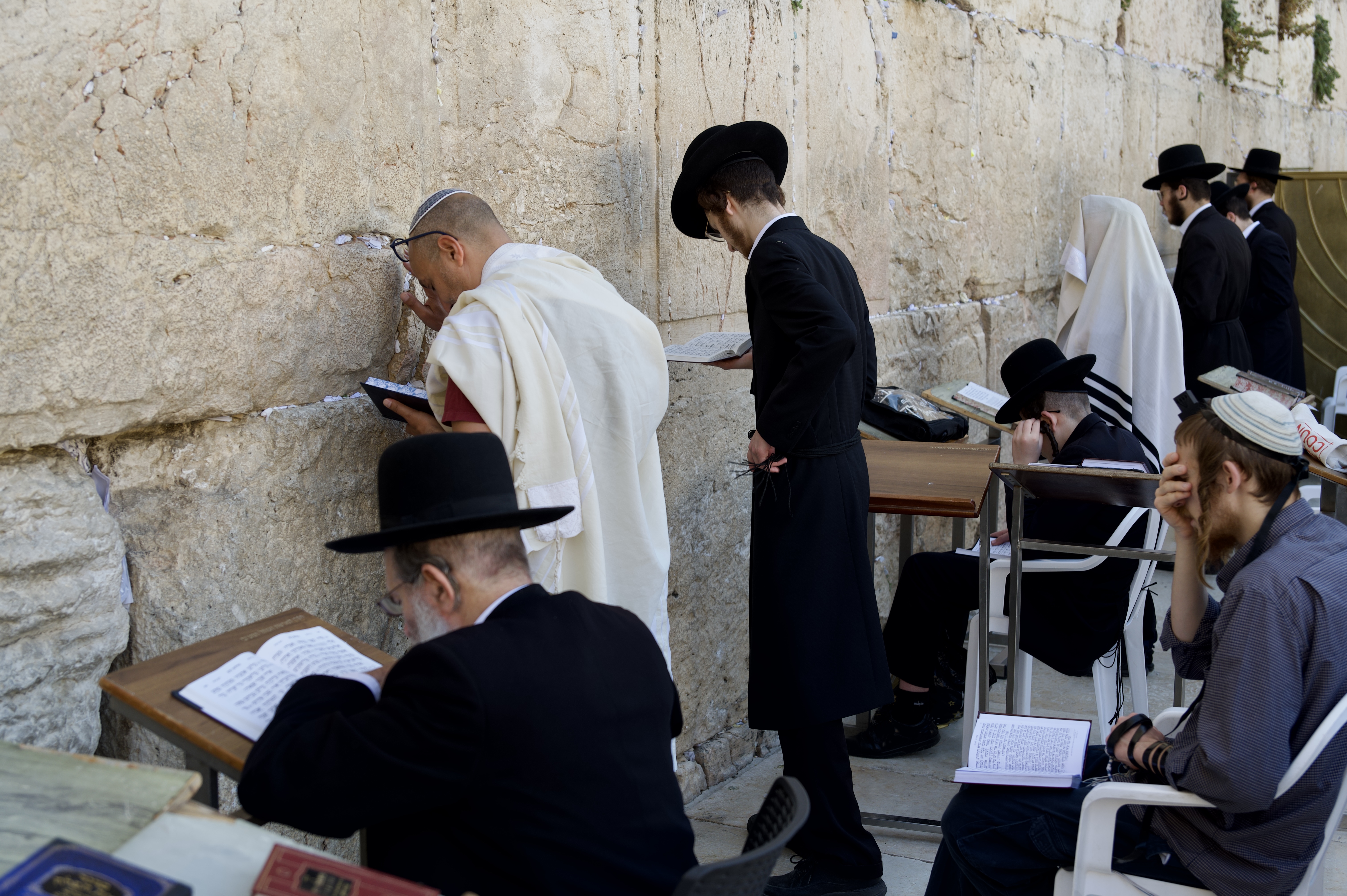
It was very crowded today with many, many men wearing their phylacteries, shawls, and tassels.
Once we joined back together, we walked to the southern end of the mount to an area known as the Southern Steps. This is a place I had not visited before and was probably my favorite thing I’ve seen so far on this trip.

As we approached the Southern Steps, Ami pointed out numerous excavations of mikvah, which were needed for purification before entering the temple.

The Southern Steps were the main way to access to Temple Mount in the time of Jesus, and there is no doubt that he walked on these rocks when he entered the temple (Mathew 21:12-17; Mark 11:11, 15-19, 27-22; 12:36-37; Luke 2:41-52; 19:45-48; John 2:13-22; 7:14-31; 8:2-11).

Ami talked about this a little and then Bruce got up and spoke. He mentioned the possibility that Peter’s Acts 2 sermon might have been delivered from these steps, and that the mikvah were used to baptize the 3,000 on Pentecost.

It was an almost overwhelming feeling to be sitting on these steps, and I’m so glad we got to do it on this trip. It is also neat that Pentecost is on Sunday, just two days from now. On a side note, these steps would have been connected to the pilgrimage road that we saw later in the day.

We then moved back to the western side of the mount, and Ami began to explain which rocks were original to Herod’s Temple Mount and which had been added later. This was always confusing to me, and today helped a lot. He explained that the lower, larger stones go all the way back to the time of Herod the Great. Most of these stones are “framed” with a depressed area around the outside of the stone. Up higher, smaller stones were added over the centuries by the Romans, the Muslims, the crusaders, and the Turks.

Further up the wall, he showed us the beginning of an arch that is sticking out from the wall known as Robinson’s arch. Robinson was a Biblical scholar who identified this arch as being part of Herod’s Temple Mount in 1838, when he connected this arch with a description given by Josephus of the temple area. Ami said that before excavations began in the area, the wall was buried all the way up to the arch.

Ami also pointed out piles of large rocks at the base of the wall that fell during the destruction of the temple in AD 70. This is unbelievable.
The City of David
Once we finished at the Western Wall, we walked out of the Dung Gate to the City of David. This is an archaeological park on the eastern side of the “Old City”, outside of the present-day walls. This is the area where city would have been located when David established it as the capital of Israel (2 Sam 5:6-10; 1 Chron 11:4–9) before it was later expanded by King Hezekiah (2 Kings 18-20; 2 Chron 29-32).

As we went down into the site, we saw the excavated remains of a large building that has been excavated and dated to the time of David in the 11th to 10th century BC. It is presumed to be an administrative building for the Kings of Israel because they found a “bulla” or signet imprint from one of the officials of King Zedekiah, the last king of Judah (2 Kings 24–25; 2 Chronicles 36 / 6th century BC). Some have speculated that this was David’s palace, but there is no way to know whether this is the case.

Below this building is the “Royal Area” which contained a retaining wall from the Canaanite Period that supported the administrative building above. This was such a large wall that there was a house built in the middle of it.

Next, we entered a water system that is comprised of both the original Canaanite water system and Hezekiah’s water system. This water system is very cramped with lots of stairs, tunnels, and tight squeezes. I’ve got to give a big shout out to Olivia, who is extremely claustrophobic, but fought through and made it all the way to the end.

The first place we came to was “Warren’s Shaft,” which is a vertical shaft next to the Gihon Spring. It was discovered in 1867 by British engineer and archaeologist Sir Charles Warren and dated to the 18th century BC. Warren thought this was part of the Canaanite water system and that David had used it to access the city of Jerusalem when he took it from the Jebusites (2 Sam 5:8). However, More recent excavations show this was not the case.
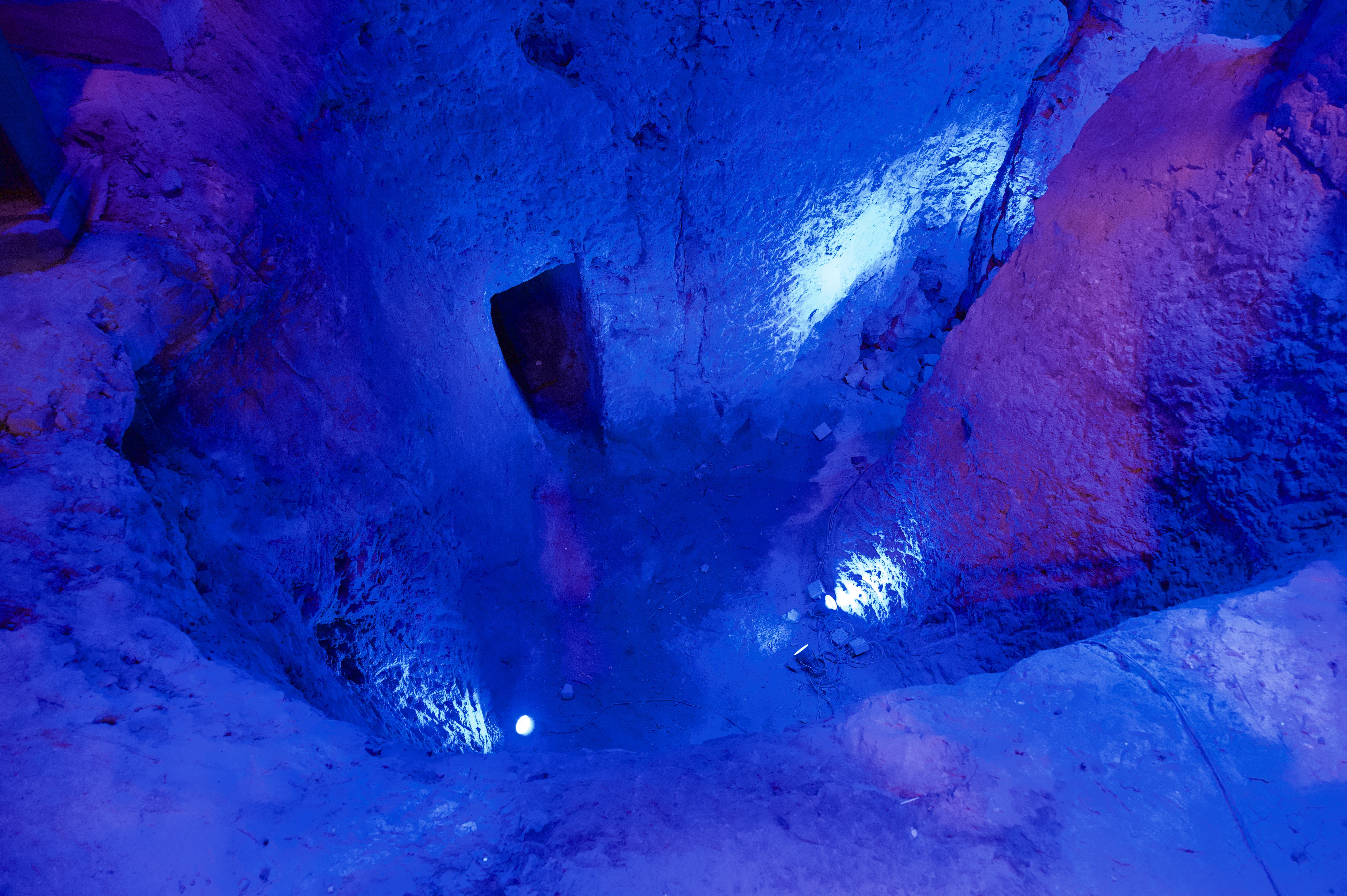
The actual Canaanite Water system consisted of a water reservoir from the 18th century BC that has been excavated.

This water reservoir was located next to the Spring of Gihon and protected by a nearby tower.

After the tower we saw the entrance to Hezekiah’s Tunnel, which is a 533m water channel that was built when Jerusalem was preparing defenses against the approaching Assyrian army in the 8th century B.C. King Hezekiah decided to protect the water source by diverting its flow deep into the city with a tunnel system that connects the Spring of Gihon with the Pool of Siloam (2 Kings 20:20; II Chronicles 32:30). An ancient stone carving found near the entrance describes the incredible operation and identifies it to the time of Hezekiah. This spring is mentioned several times in scripture and is most noted as being the location where Solomon was anointed as king of Israel (1 Kings 1:28–53).
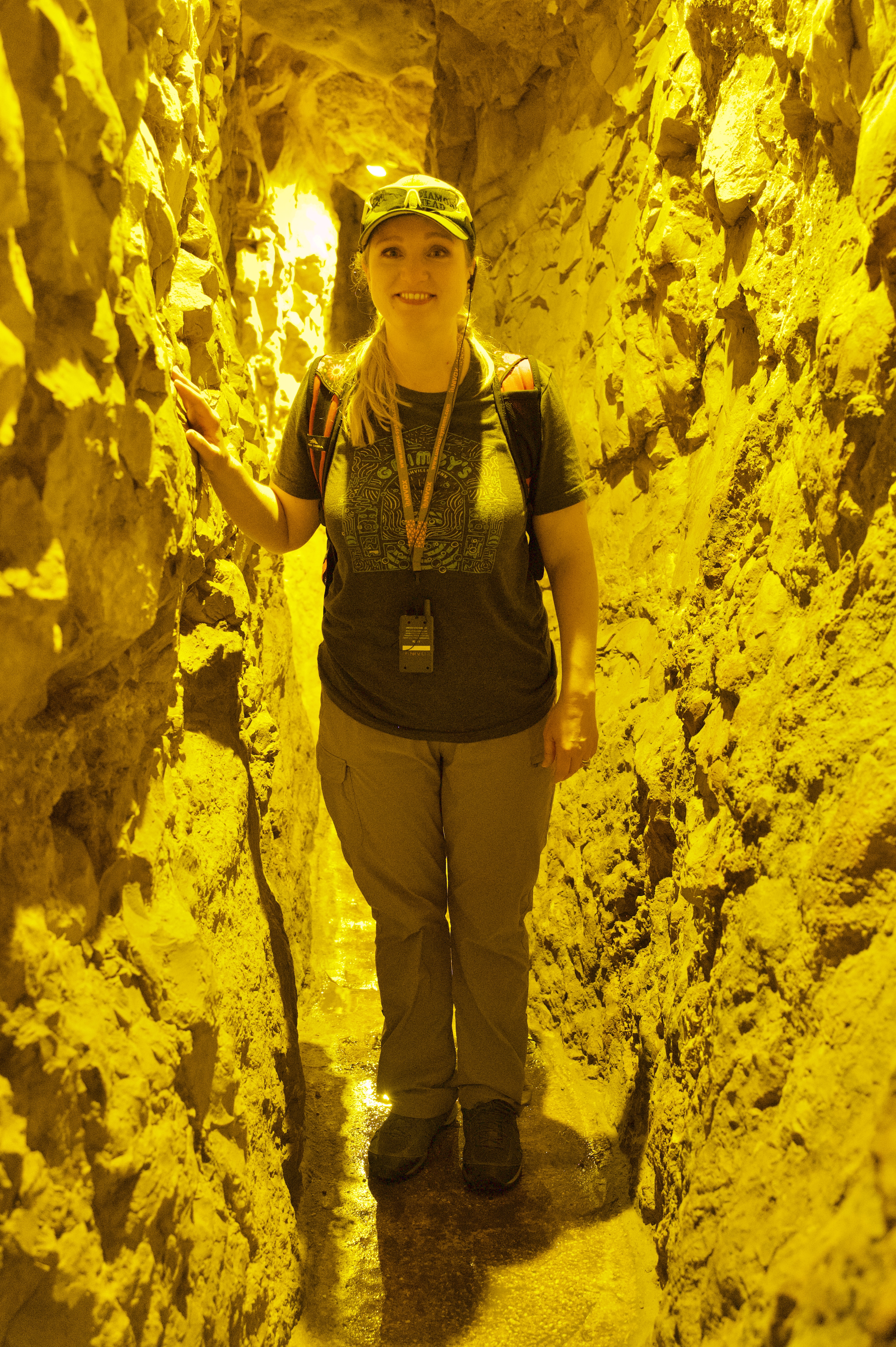
Sometime when I’m here, I really want to go through Hezekiah’s Tunnel. Today, just like in 2020, we took the dry Canaanite tunnel to the outside. Olivia had a hard time with this part, but she made it!
Pool of Siloam / Pilgrimage Road

Our last stop in the City of David was at the Pool of Siloam where Jesus healed the blind man in John 9:7.

The group sat on the steps of this ancient pool and I read from John 9.

I also talked to the group about the time when Jesus was in Jerusalem during the Feast of Tabernacles in John 7.

This is connected to the Pilgrimage Road that has been uncovered within the past few years. This road would have connected the Pool of Siloam with the Temple. In the time of Jesus, this is the road that the priests would have used during the 7 days of the feast of Tabernacles. Each day of the feast the priest would take a golden picture from the temple and walk down this road to the pool of Siloam. He would fill the pitcher with water and then walk back up to the temple and pour the water over the altar. This was in celebration of the water that God had provided the children of Israel in the wilderness. It was in this context that Jesus said the following in John 7:37-38:
John 7:37-38 On the last day of the feast, the great day, Jesus stood up and cried out, “If anyone thirsts, let him come to me and drink. Whoever believes in me, as the Scripture has said, ‘Out of his heart will flow rivers of living water.’ ”

It was awesome to visit this special place again with my family. It was my favorite site during my first trip in 2020. To know that Jesus performed a miracle at the Pool of Siloam, and that He likely walked this road many times. Just like with the Southern Steps, it is very humbling.
Church Saint-Peter in Gallicantu
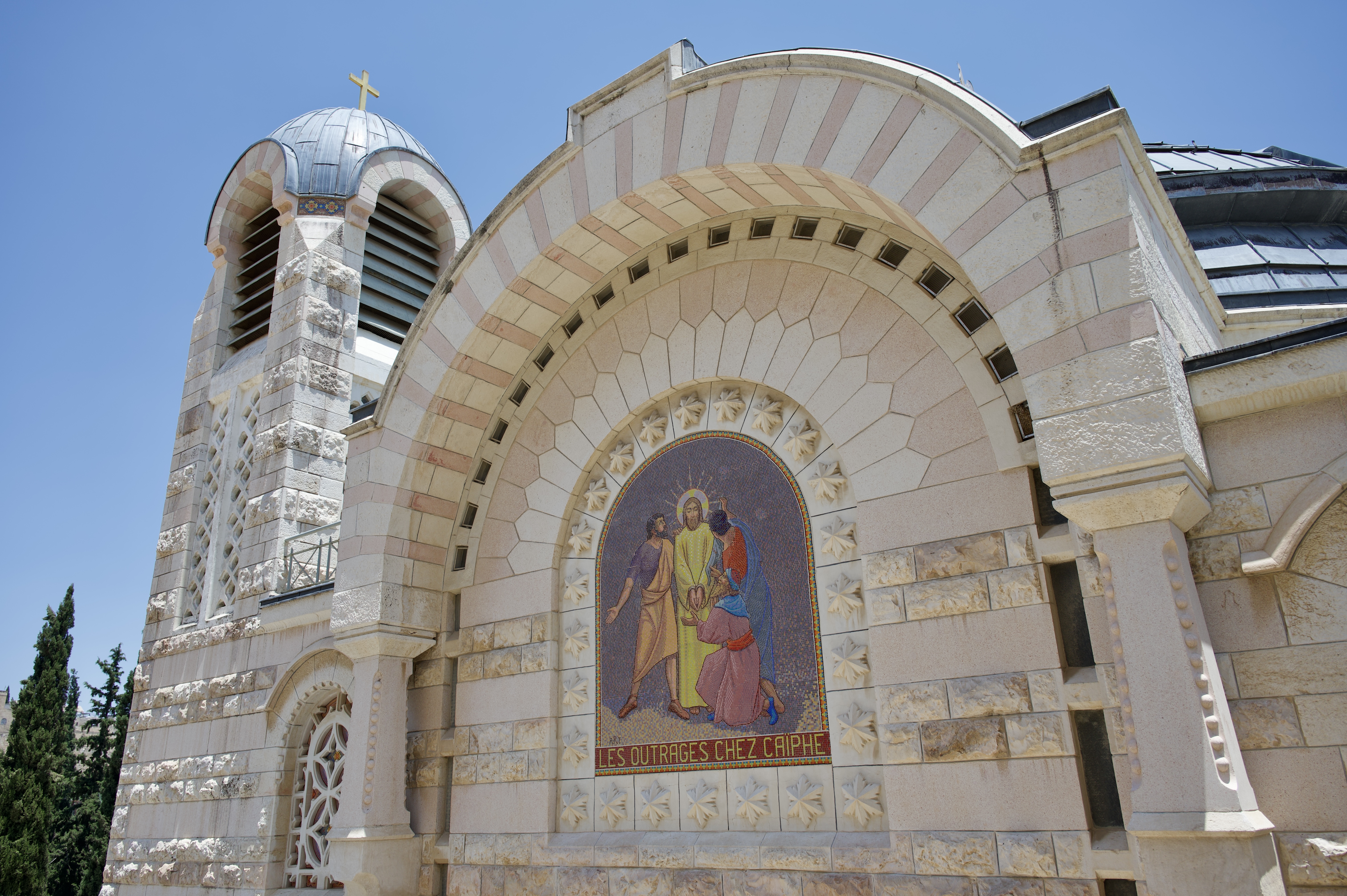
We left the City of David and boarded the bus for a short drive to Church Saint-Peter in Gallicantu near Zion gate outside the city walls. This is a 19th Century French Catholic church built over a 5th century Byzantine shrine. The shrine was built because an ancient dungeon (pit) was found connected to a house that was dated to the first century AD. It was believed that the High Priest Caiaphas lived in this area, so it is traditionally considered to be his home and the pit where Jesus was held after being brought from the Garden of Gethsemane. It was while Jesus was appearing before Caiaphas that Peter denied Him three times (Matthew 26:57-75; Mark 14:53-72; Luke 22:54-62; John 18:12-27).

I had not been to this place before, so this was a new experience. We started of by going to the main sanctuary, which was very beautiful. Next, we went downstairs into a chapel that sits on top of the ancient Byzantine shrine.

In the chapel I read to the group from Luke 22 concerning Peter’s denial, and then we proceed downstairs to see the pit.

We climbed down into this small pit and Daniel read to us from Psalm 88 for us to think about Jesus crying from the pit.
While our two morning stops were amazing, this is just a “traditional” place. The good thing about this site is that it really is an ancient dungeon and gives us an idea of what one would have looked like. It also takes your mind back to that night, and what Jesus went through before He gave up his life for us.
Mt Zion Church

Next drove a very short distance to Mt. Zion Church, which is just outside of Zion gate.

We didn’t go inside the church building but did visit the traditional tomb of David that is located there. Just like with the Western Wall, this is a place of prayer and is divided between men and women.

We also visited the “Upper Room” built by German crusaders in the 12th century to commemorate the last supper of Jesus and his disciples. This was directly over the traditional tomb of David. While we were in this room, there was a group from Germany that was singing, and it was quite beautiful. I had not been to this site before either, and do not think there is a ton to be gained from visiting here.
Jewish Quarter
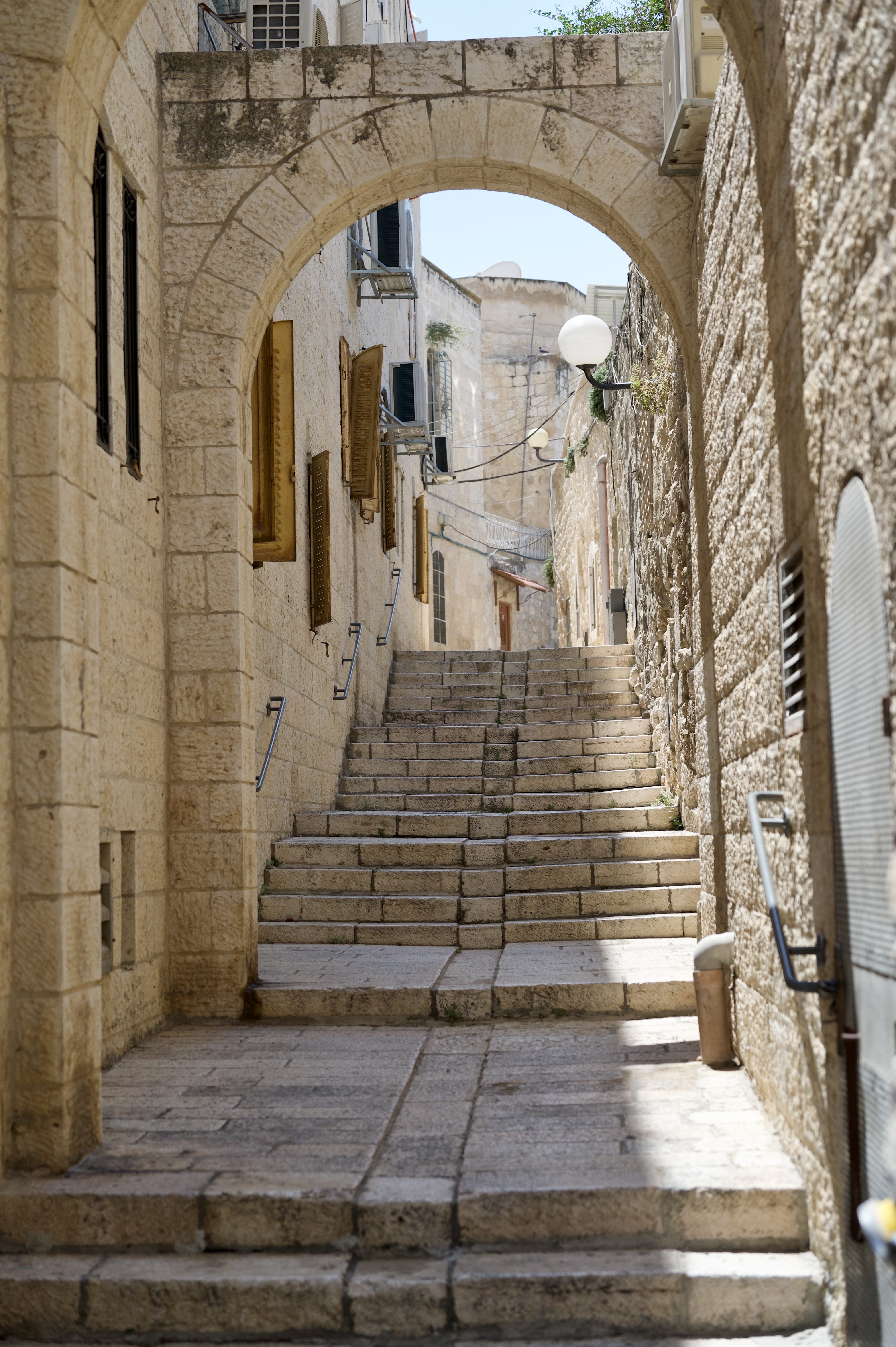
From Mt. Zion Church we walked over to the Old City and entered the Jewish Quarter through Zion gate.
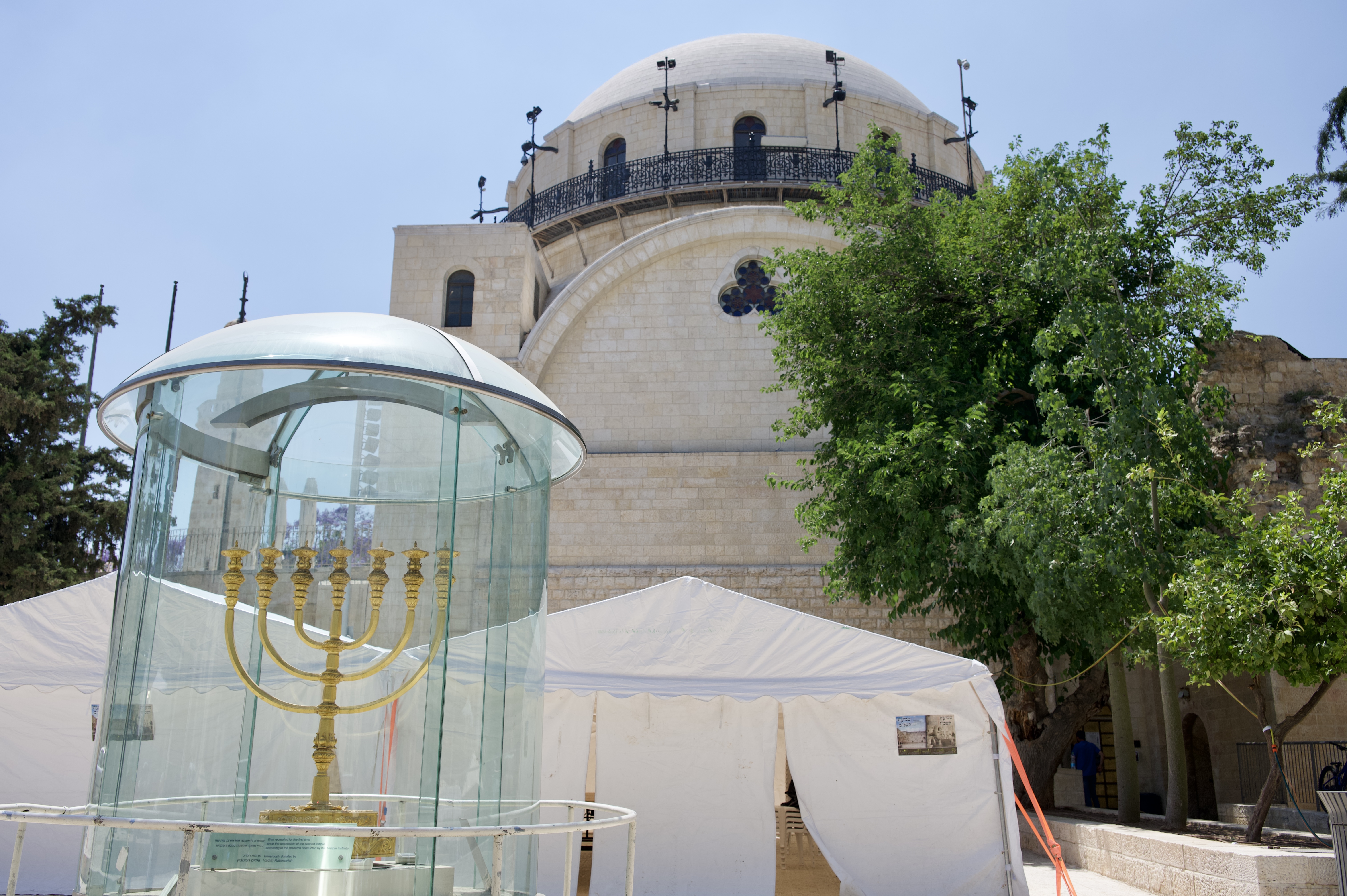
We walked the streets for a few minutes before crossing the main plaza with the Haramban Synagogue.

Ami gave us some free time for a very late lunch and shopping. We ended up eating at a shawarma place, and it was good, though ordering was a bit hectic.
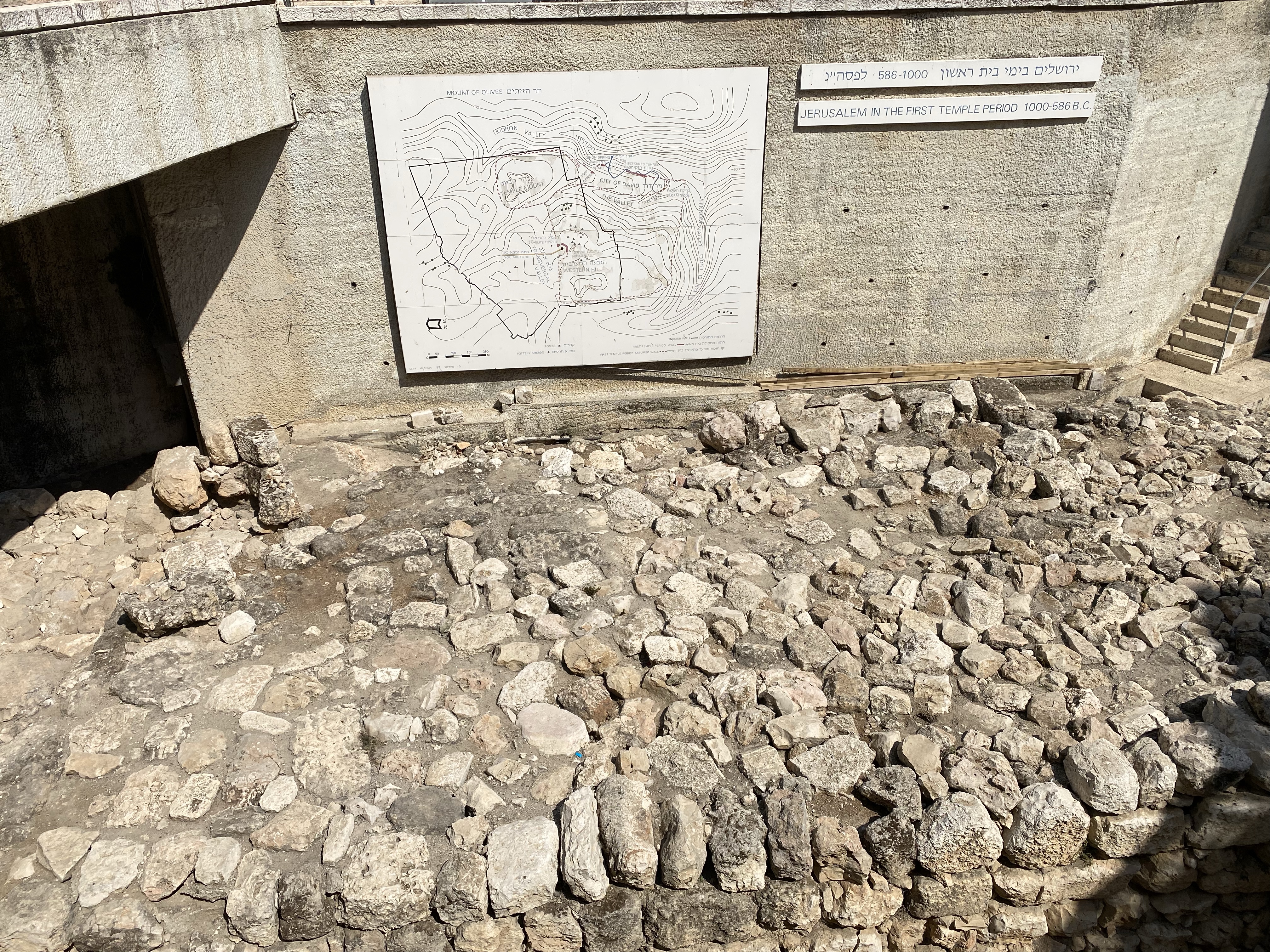
After lunch, Ami walked us over to see the Broad Wall, which is a piece of the wall that remains from the 1st temple period. It was excavated in 1970 and dated to the time of King Hezekiah in late 8th century BC. The length of wall fragment is 65 meters long and is preserved in places to a height of 3.3 meters. It is 7 feet thick. This was a substantial wall.

Next, we walked through the remains of the Byzantine Cardo (Heart of the City) from the 5th century AD. Finally, we walked along the edge of the Armenian quarter toward the Jafa gate where we exited the city and boarded the bus. After another short drive, we were back at the hotel for the night. Dinner was good, but I wasn’t terribly hungry since our lunch had been so late. Anyway, it was another great day in Israel. Tomorrow, we start with the Mount of Olives and then head back into the Old City.
